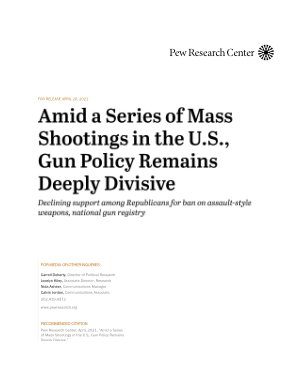by Heather J. Williams, Luke J. Matthews, Pauline Moore, Matthew A. DeNardo, James V. Marrone, Brian A. Jackson, William Marcellino, Todd C. Helmus
Racially or ethnically motivated violent extremism (REMVE) and extremists (REMVEs) present some of the most pressing threats to the United States. REMVE also has been identified as the White identity terrorist movement (WITM). REMVEs are among the most lethal domestic violent extremists, and they are the most likely to commit mass-casualty attacks. These movements are characterized by a broad ideological orientation toward xenophobic, anti-Semitic, racist, and misogynistic sentiment.
For this report, the authors reviewed the relevant literature on REMVE networks and collected and analyzed social media data from six social networks (Twitter, Reddit, Gab, Ruqqus, Telegram, and Stormfront) to produce a global network map of the digital REMVE space. That network map evaluates each network's construction, connectivity, geographic location, references to prominent organizations, and proclivity to violence. The authors also reviewed ten countries' experiences with REMVE to sketch out an understanding of the REMVE space in these countries and how REMVEs in those countries relate to those in the United States.
Key Findings
The WITM/REMVE global network on social media is largely created and fueled by users in the United States
WITM/REMVE is fueled by U.S. domestic drivers, and this movement is less of an issue in other countries.
Programs to counter violent extremism are generally most productive when they are local.
The primary need is for robust national strategies to counter WITM/REMVE, specifically in the United States.
An organization- or actor-focused counter-WITM/REMVE strategy likely will not work because of the diffuse nature of REMVE movements
Intervention strategies should be multifaceted because of the complex nature of the problem and its intersections with protected civil rights
There are structural differences in how REMVE manifests and is countered in Europe versus in the United States
Racially or ethnically motivated violent extremism (REMVE) and extremists (REMVEs) present some of the most pressing threats to the United States. REMVE also has been identified as the White identity terrorist movement (WITM). REMVEs are among the most lethal domestic violent extremists, and they are the most likely to commit mass-casualty attacks. These movements are characterized by a broad ideological orientation toward xenophobic, anti-Semitic, racist, and misogynistic sentiment.
For this report, the authors reviewed the relevant literature on REMVE networks and collected and analyzed social media data from six social networks (Twitter, Reddit, Gab, Ruqqus, Telegram, and Stormfront) to produce a global network map of the digital REMVE space. That network map evaluates each network's construction, connectivity, geographic location, references to prominent organizations, and proclivity to violence. The authors also reviewed ten countries' experiences with REMVE to sketch out an understanding of the REMVE space in these countries and how REMVEs in those countries relate to those in the United States.
Key Findings
The WITM/REMVE global network on social media is largely created and fueled by users in the United States
WITM/REMVE is fueled by U.S. domestic drivers, and this movement is less of an issue in other countries.
Programs to counter violent extremism are generally most productive when they are local.
The primary need is for robust national strategies to counter WITM/REMVE, specifically in the United States.
An organization- or actor-focused counter-WITM/REMVE strategy likely will not work because of the diffuse nature of REMVE movements
Intervention strategies should be multifaceted because of the complex nature of the problem and its intersections with protected civil rights
There are structural differences in how REMVE manifests and is countered in Europe versus in the United States
Santa Monica, CA: RAND, 2022. 184p.




















